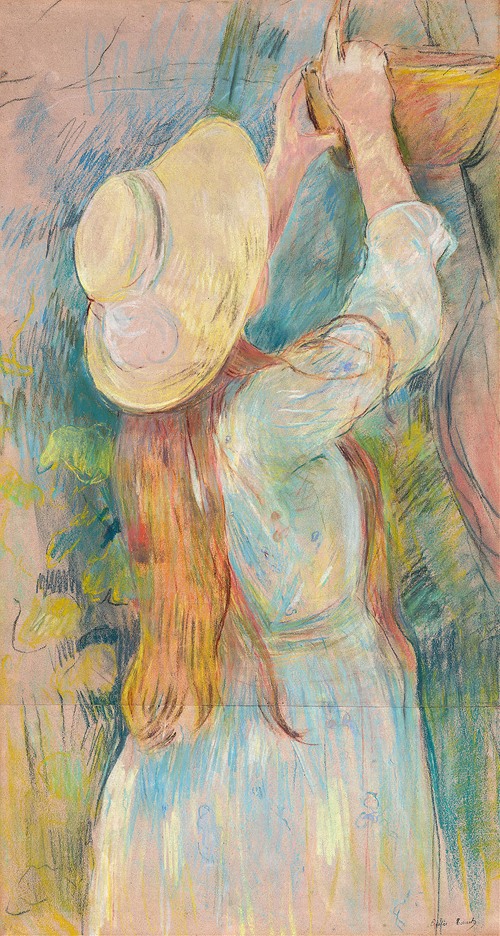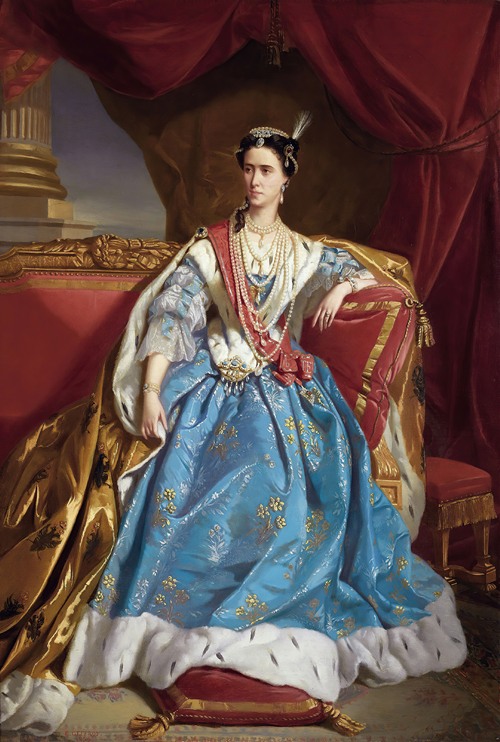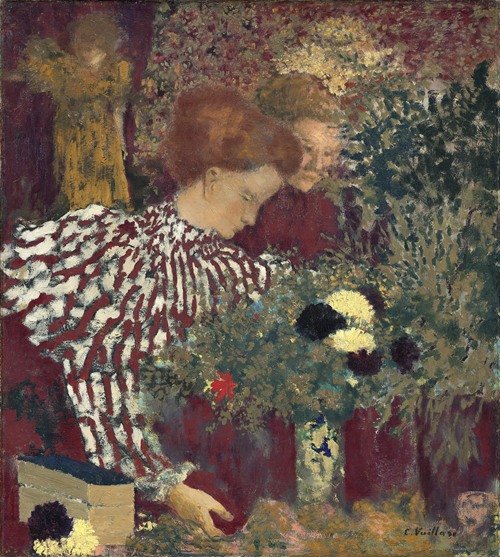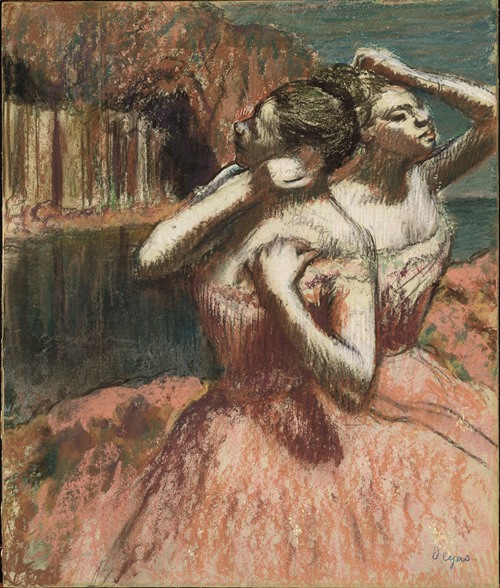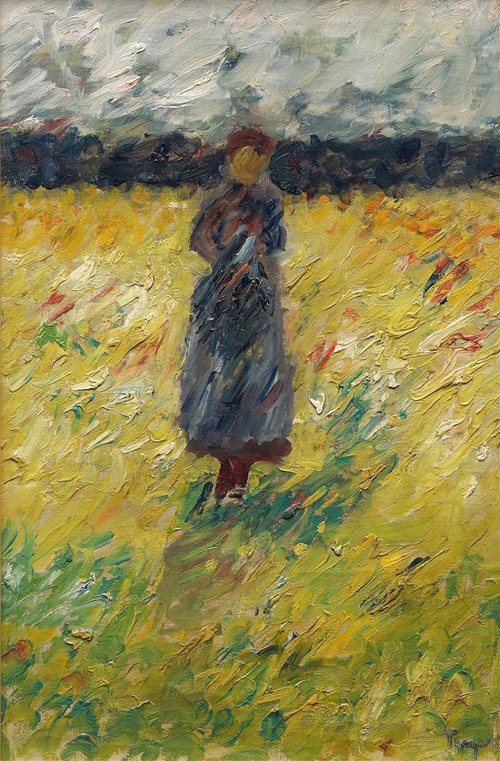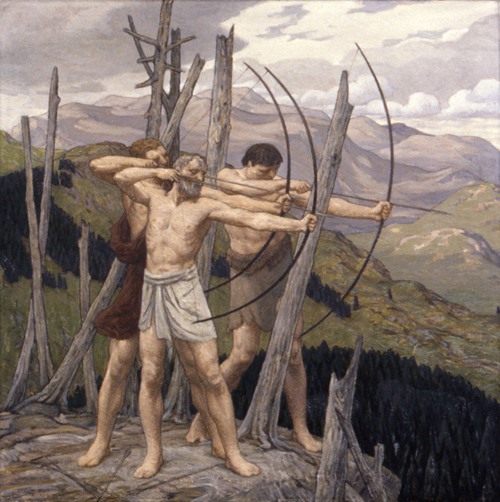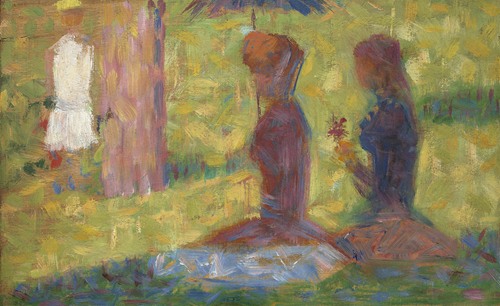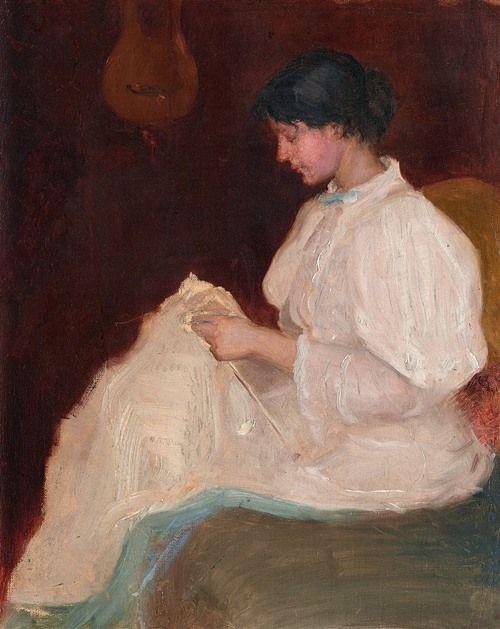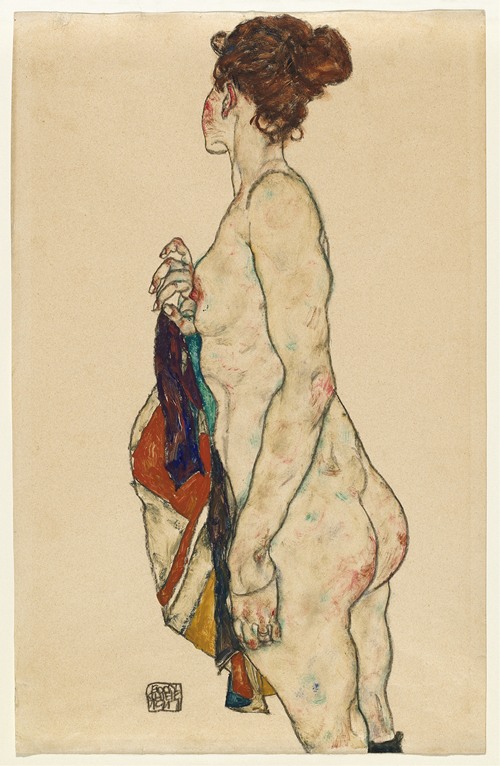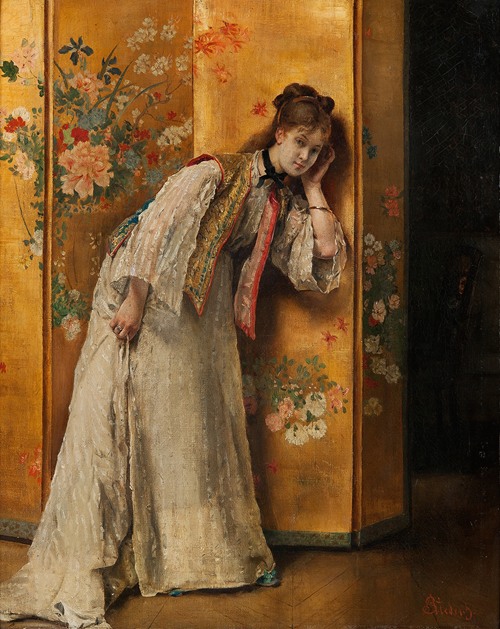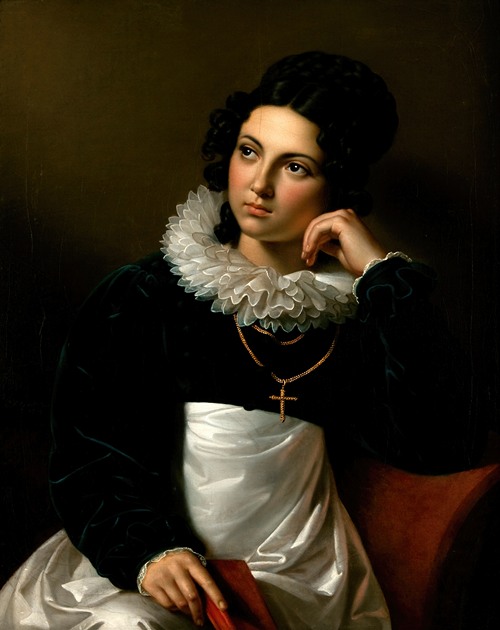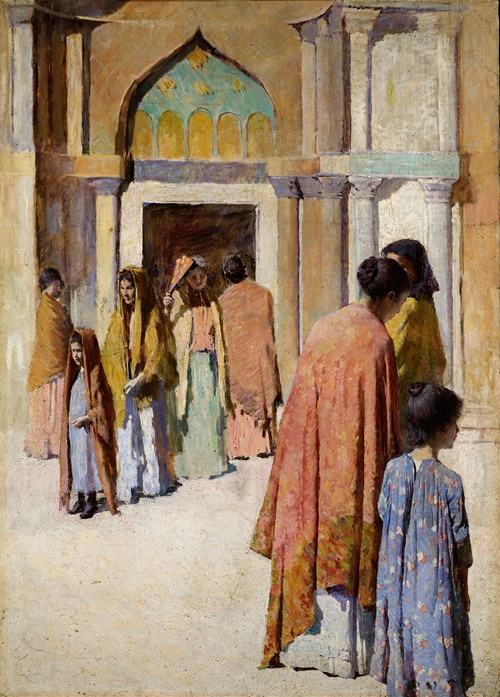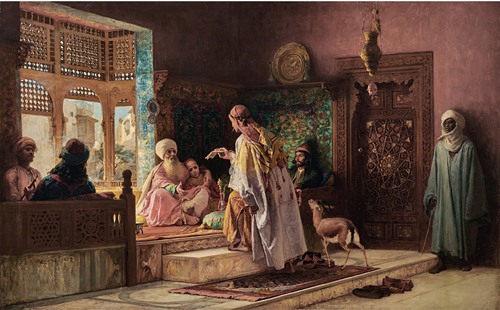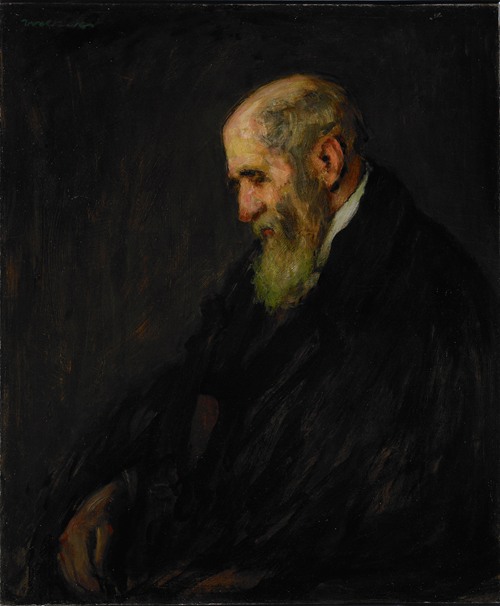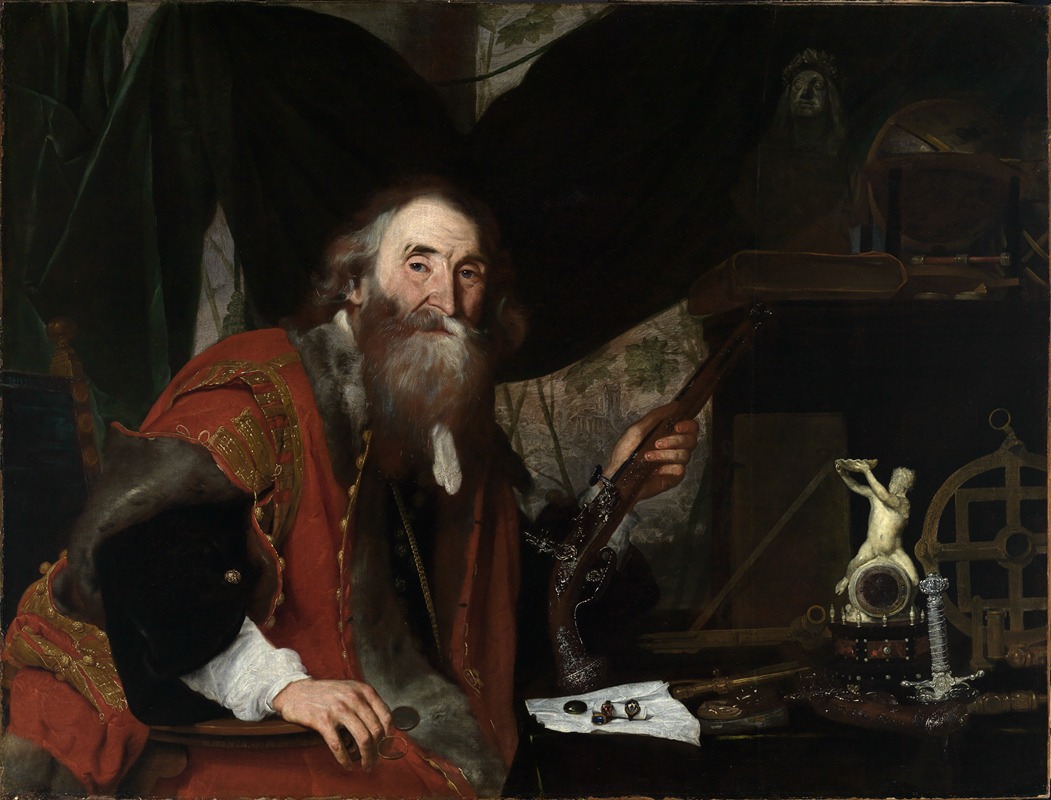
Jan de Herdt, in Italy also called Il fiammingo was a Flemish painter and draughtsman. After training in Antwerp, he spent his entire career abroad, first in Northern Italy and later in Vienna and other cities in central Europe. He was mainly a portrait artist but also painted genre scenes as well as religious, mythological and allegorical subjects. He was part of a network of Flemish and Dutch painters working for the court, aristocracy and ecclesiastical institutions of central Europe.
Details about the life of Jan de Herdt are sketchy. He is believed to have been born in Antwerp around 1620. It is not clear who was his master. He is not recorded with any of the contemporary painters as a pupil. It is therefore possible that he studied with Rubens or Jordaens, two artists who as court artists were exempted from the requirement to register their pupils with the Antwerp Guild of Saint Luke. There exists no documentary evidence for such apprenticeship. It is also possible that he was trained outside of Antwerp. He was admitted as a master in the Antwerp Guild of Saint Luke in the guild year 1646–47. On 18 October 1648 he joined the 'Sodaliteit van de Bejaerde Jongmans' (Sodality of the Unmarried Men of Age), a fraternity for bachelors established by the Jesuit order.
He left Flanders and was subsequently recorded in Northern Italy, where he was documented in Lovere in 1657 as working on an altarpiece for the local church of St George. The large painting depicting Moses striking the rock is still in situ. He was recorded in Bergamo in 1658 where he painted the Abraham and Abimelech for the Santa Maria Maggiore Church, which is still in situ. He is documented in Brescia in 1660–1661. In this location he resided long enough to train the painter Angelo Everardi, who was likely of Flemish descent and was known as il Fiammenghino. Although there is no documentary evidence for this, it is likely that he was also active in Mantua for a while. The artistic direction of the Ducal Court in Mantua had been for decades in the hands of Flemish artists, first Daniel van den Dyck and later Frans Geffels. Geffels was also from Antwerp and had become a member of the Antwerp Guild of Saint Luke a year earlier than de Herdt. He had then left to work in Italy while also working for periods in, and maintaining links, with Vienna, where both artists are believed to have arrived in the early 1660s. It is likely that the artists knew each other as they both contributed to a collaborative book published in Vienna, the Historia di Leopoldo Cesare.
Jan de Herdt followed in the footsteps of many of his compatriots of the previous generation who sought a career in Central Europe. The Southern Netherlands had developed a close bond with the Imperial court in Vienna as its Spanish rulers were connected with it through dynastic links. The governors of the Southern Netherlands were often members of the Austrian Imperial family. They occasionally took artists from Flanders back with them when they returned to Vienna after being called back from their post. This was the case with Archduke Leopold Wilhelm, who brought artists such as Jan Anton van der Baren, Franciscus van der Steen and Nikolaus van Hoy back with him to Vienna.
Jan de Herdt's brother had preceded him as he was working in Vienna as a goldsmith to the court and may have been instrumental in introducing Jan to the court in Vienna. While he is believed to have arrived in Vienna around 1660, Jan is first documented in Vienna on 8 January 1662. On that date he signed his name in the ecclesiastical registers of the Schottenkirche (Scottish church) in Vienna as he together with the Flemish engraver Franciscus van der Steen acted as a witnesses at the wedding of the Dutch artist Hans de Jode. Jan de Herdt later collaborated with van der Steen on a series of aristocratic portraits for the publication Historia di Lepoldo Cesare. Frans Geffels also contributed to this publication. In Vienna, de Herdt painted portraits of courtiers as well as history paintings for their chateaux and palaces. He appears in the business records of Forchondt, a family business of art dealers from Antwerp who served clients throughout Europe and had a branch in Vienna. The son of the founder of the family business trained as a goldsmith with Jan's brother in Vienna. The records of the Forchondt firm show that in 1671 Prince Schwarzenberg bought a painting on the subject of Armida and Rinaldo, which was likely the Rinaldo preventing Armida's suicide by de Herdt (now in the former Augustinian monastery in Brno).
Jan may have been active in Jaroměřice nad Rokytnou (now in the Czech Republic) from the beginning of 1666 to January 1667. From 1666 to 1668 de Herdt worked in Brno. He is recorded in Prague in 1680 where he had accompanied the court when it fled Vienna due to an outbreak of the plague. He was in Třebíč from 1880 to 1881 and, in this last year, also in Znojmo. In 1684 he executed two works for patrons in Prague but these were possibly created elsewhere. The last report of his presence in Jaroměřice nad Rokytnou dates back to 1686. After 1686 there is no more news of the artist.
The exact time and place of his death are not known. There are no records about him after 1686. It is believed he died sometime between 1686 and 1690 in Central Europe.
